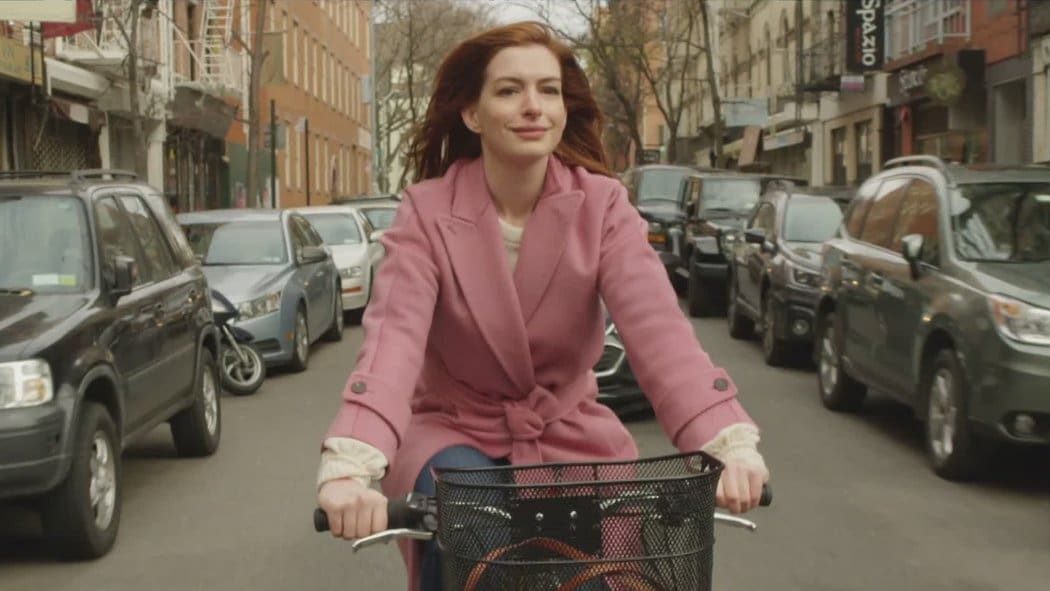
Modern Love may be new to the small screen, but these stories have inspired audiences for years. Since 2004, the “Modern Love” column in the New York Times has showcased unique, totally authentic love stories from writers all over the world. They’ve documented romantic love, familial love, platonic love, self-love, and even the end of love. Eventually this very popular column turned into a podcast, where celebrities came into the studio to record readings of essays that touched them in some way. These stories have a dedicated fan base, and many have gone viral. And with good reason: this is a genuine joy of a storytelling device, and there are stories for everyone — whether they believe in true love, or take a more cynical approach to the whole thing. Reading or listening to these stories is almost therapeutic, and bringing them to television makes sense.
But, in the grand television landscape, Modern Love can’t help but stand out as an oddity of sorts. There are so many streaming series that demand to be seen as soon as possible to avoid spoilers. This is the antithesis of that model, and it feels somewhat new for a streaming network. This is comfort food that you can return to for eight individual breaks from the marathon that is modern TV watching.
This series takes the same exact structure as the podcast and column before it. Each episode follows a personal story of love, jumping from subgenre to subgenre as the story demands. This first batch of eight episodes includes some of the more famous stories to come out of Modern Love so far. There are romantic ones, like the story of a dating app developer (Dev Patel) and the journalist interviewing him (Catherine Keener) as they share the stories of their first loves. But others are a bit more complicated, such as the heartwarming story of a woman (Cristin Milloti) who’s unusual relationship with her doorman comes in handy as she faces a personal crisis. Another follows a bipolar woman (Anne Hathaway) as she tries to navigate dating with her condition. There are big names throughout every episode, including Tina Fey, recent Emmy winner Julia Garner, and the Hot Priest himself, Andrew Scott.
Of course, as we’ve seen with other anthology series, the quality of the series can rise or dip from episode to episode. Across the first three episodes, the series sometimes dips a bit too close to This is Us levels of sentimentality that rob the stories of the raw authenticity found on the page. The second episode, “When Cupid is a Prying Journalist,” goes a bit too big with its emotional beats and can’t quite juggle its two dueling storylines in just thirty minutes. But even that episode has some high points: Dev Patel and Catherine Keener are both quite good in their roles, and picks up the mantle from Mamma Mia: Here We Go Again by realizing that Andrew Garcia is an actor worth swooning for.
Sometimes, Modern Love takes interesting creative risks. “Take Me As I Am, Whoever I Am,” Hathaway’s episode, fluctuates back and forth between a starkly realistic drama to a light-hearted, La La Land-esque musical, and it mostly works. Hathaway is as committed as ever to selling this story, and she does wonderful work. This is probably the best episode in the first half – it’s a bit darker than the rest, and that makes the ending all the more rewarding. But, more than that, it shows that Modern Love can work whenever it steps outside of the box and decides to do something new with this medium. There’s nothing wrong with reminding viewers of their favorite romantic comedy, but they can already hear the same story in an audio format or read it online for free.
For the most part, Modern Love feels quite comforting and familiar, even if it plays it a bit too safe. There’s a warmth to the series that, like the podcast and column before it, turns these very personal stories into something relatable. It might simplify complicated emotions a bit too much – it’s hard to imagine some of the written essays that are dark and complicated working within this series, but it’d be exciting to see them try. But the season’s first episode, “When the Doorman is Your Main Man,” perfectly captures what makes the series work across all mediums: these are sweet stories that work in small doses.
And it’s in those small doses that Modern Love fits into the television landscape of 2019. It’s hard to imagine binging this series in one sitting – it doesn’t quite demand to be seen over the course of a single weekend. And I’m not quite sure these stories needed to exist in this medium, even though I’m approaching this show as someone who has religiously read this column and listened to this podcast. Someone who’s never heard these stories before may find them fresh and vibrant. As individual episodes, these installments are sweet, and perfectly satisfying. As a whole, this can feel somewhat minor amidst the many series dominating the conversation.
But we experience newspaper columns and podcasts on a weekly basis. We used to experience TV that way too. There’s a world where Modern Love would work as a weekly breath of fresh air, and while the binging model may not want you to wait a week between installments, this series works best that way. There’s no need to rush through these stories; these work better as an occasional reminder that, sometimes, the best stories happen in real life. But watching it all at once might be a little too sweet.
For a review of the full season, check back on 10/18.

